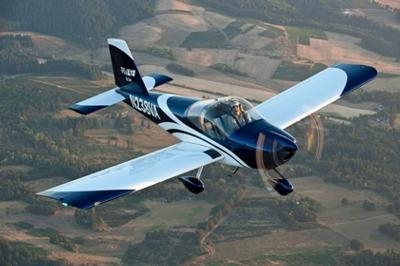Wed, Jan 18, 2017
You’ll See Lots Of Light Sport Aircraft At The Light Sport Expo In Sebring, FL
With the Light Sport Expo being held next week in Sebring, FL it’s an appropriate time to ask the question; exactly what is a light sport aircraft (LSA)?

Anyone that holds a sport pilot certificate, or anyone that is exercising sport pilot privileges, is limited to flying a light sport aircraft. If a pilot is not limited to sport pilot privileges, an LSA may be a perfect choice for an aircraft, but it’s not a required choice. LSA is a definition of an aircraft; it is not a specific certification type.
The definition of a light sport aircraft is found in the Federal Aviation Regulations Part 1.1. Here is an abridged version of that description:
- A maximum takeoff weight of not more than 1,320 pounds for aircraft not intended for operation on water; or 1,430 pounds for an aircraft intended for operation on water.
- A maximum airspeed in level flight with maximum continuous power of not more than 120 knots.
- A maximum stalling speed or minimum steady flight speed without the use of lift-enhancing devices of not more than 45 knots at the aircraft's maximum certificated takeoff weight.
- A maximum seating capacity of two persons, including the pilot.
- A single, reciprocating engine, if powered.
- A fixed-pitch propeller or ground-adjustable propeller.
- A fixed-pitch, semi-rigid, teetering, two-blade rotor system, if a gyroplane.
- A non-pressurized cabin, if equipped with a cabin.
- Fixed landing gear, except for an aircraft intended for operation on water or a glider.
Any aircraft the fits this description is okay for a sport pilot and is often referred to as an LSA. However, the type of FAA certification the aircraft holds can make a difference in the ownership of the aircraft. The most common LSA certification categories you will be considering as candidates for owning are:
- An FAA type certificated aircraft such as a Cub, Champ, Ercoupe, or some other “classic.”
- A special light sport aircraft (S-LSA) that is certified under the new light sport rules.
- An experimental aircraft that could come in several sub categories.
Any one of these aircraft certification types may have pros and cons to ownership but they all could qualify for sport pilot operation. The LSA buyer needs to learn how the certification affects ownership. Because the issues defined around light sport aircraft cross the boundaries between pilot certification, aircraft certification, and aircraft maintenance requirements, it may require talking to different people and doing a bit of research to get all the details in line.
With all the excitement about the new regulation changes that affect options for maintaining the requirement of a third class medical, don’t forget that nothing has changed for those who are exercising sport pilot privileges. The medical requirement for sport pilot is that the operator holds a valid state driver’s license. While taking advantage of some of the changes such as reviewing an online medical awareness training course and having regular doctor checkups is always a good idea, it is not required for sport pilots.
(Images from file)
More News
Aero Linx: Model Aeronautical Association of Australia MAAA clubs are about fun flying, camaraderie and community. For over 75 years, the MAAA has been Australia’s largest fl>[...]
Touchdown Zone Lighting Two rows of transverse light bars located symmetrically about the runway centerline normally at 100 foot intervals. The basic system extends 3,000 feet alon>[...]
“Discovery and innovation are central to our mission at Virgin Galactic. We’re excited to build on our successful record of facilitating scientific experiments in subor>[...]
How To Get A Story On Aero-TV News/Feature Programming How do I submit a story idea or lead to Aero-TV? If you would like to submit a story idea or lead, please contact Jim Campbel>[...]
Student Pilot Reported That During Rotation, “All Of A Sudden The Back Of The Plane Kicked To The Right..." Analysis: The student pilot reported that during rotation, “>[...]
 ANN's Daily Aero-Linx (05.02.24)
ANN's Daily Aero-Linx (05.02.24) ANN's Daily Aero-Term (05.02.24): Touchdown Zone Lighting
ANN's Daily Aero-Term (05.02.24): Touchdown Zone Lighting Aero-News: Quote of the Day (05.02.24)
Aero-News: Quote of the Day (05.02.24) ANN FAQ: Contributing To Aero-TV
ANN FAQ: Contributing To Aero-TV NTSB Final Report: Cirrus Design Corp SR20
NTSB Final Report: Cirrus Design Corp SR20



